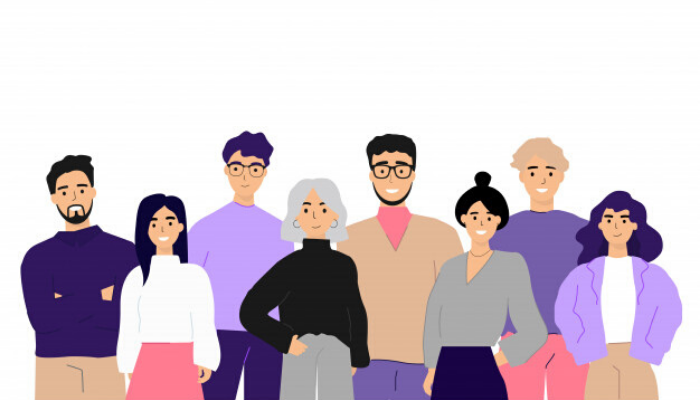Are Companies Confusing Diversity With Inclusion?

By Rajkanya Mahapatra:
In the post Industrial society, formal workplaces around the world were established and managed by men for decades before political developments mandated for women and other marginalised groups to be included in the workforce. With time, workplaces have grown to accommodate people of different identities and backgrounds. That said, up until the last decade companies were known to hire people from different backgrounds to tick ‘diversity’ off the checklist while heterosexual, able-bodied men of the dominant race/religion (depending on the sociocultural context) continued to call the shots at the workplace.
What has changed?
Hiring priorities have undergone a transformation in the recent past and businesses, especially, multinational corporations have now begun to prioritise and actively address the issue of diversity and inclusion (D&I) at the workplace. A 2018 report by McKinsey and Company, attests to this shift in priority, the report states, “Many successful companies regard I&D as a source of competitive advantage.” The report also claims companies with a more diverse workforce were seen to be making more profit than their not-so-diverse competitors. Having a diverse workforce, undoubtedly, also makes for good PR as companies appear attuned to changing societal expectations and realities.



Is Diversity = Inclusion?
Do companies think they’re being inclusive by hiring people from varied demographies? They’re not because diversity and inclusion are two distinct processes. Simply put, diversity is about ‘who’ makes the workforce – people who belong to different age groups, gender, sexuality, caste, religion, disabilities, and more. Inclusion, according to a 2018 Gallup report, is about “a cultural and environmental feeling of belonging. It can be assessed as the extent to which employees are valued, respected, accepted and encouraged to fully participate in the organisation.”
Inclusion, according to a 2018 Gallup report, is about “a cultural and environmental feeling of belonging. It can be assessed as the extent to which employees are valued, respected, accepted and encouraged to fully participate in the organisation.”
Companies risk executing tokenism for diversity. Hiring a few people each for every different demographic marker to make the annual report look good is not D&I. The benefits of a diverse workforce is realised when the company makes systematic systemic changes to counter bias, reform review and hiring mechanisms, allow opportunities and decision-making to be more evenly distributed among the workforce, to name a few.
So, it’s not enough to hire more women, trans, and non-binary people. Or people across caste and class lines. It’s definitely a start but the competitive advantage that companies are vying for will only be unlocked when they invest in inclusion. A company will succeed on their D&I mandate when a person from a marginalised group/identity feels like they truly belong in that workspace, have a certain amount of psychological safety to be able to put their best foot forward and a real shot at succeeding within that organisation.



A case in point on ‘how to think of inclusion’ would be Google HR’s efforts to understand what makes a team effective. They led with the assumption that a dream team would need a mix of “individual traits and skills” in “one Rhodes scholar, two extroverts, one engineer who rocks at Angular JS, and a PhD.” What they found was the exact opposite. The success lies not in people but in the dynamics within a team. So, you could have a diverse team but if the power dynamics within that team are skewed not only will the team not be efficient, it would also aggravate a marginalised person’s troubles at work.
An effective team should provide psychological safety to its members, ensure dependability, have clarity about goals, know if the work is of significance to those in the team, and the perceived impact of the work for all members. Efforts at inclusion would also require proportionate and enthusiastic participation from those in the workforce who occupy the more dominant social position. Inclusion has to work on a ‘by all – for all’ principle.
The success lies not in people but in the dynamics within a team. So, you could have a diverse team but if the power dynamics within that team are skewed not only will the team not be efficient, it would also aggravate a marginalised person’s troubles at work.
What are Indian companies doing?
Lately, Indian companies have begun to mention that they are an ‘equal opportunity employer’ implying that they prioritise diversity and are looking to hire people of diverse identities and backgrounds.
Companies, most notably, Tata Steel, Infosys, Godrej Properties, IBM, Goldman Sachs have turned to recruiting experts to help them hire better. Recruiting startups like Avtar, Equiv.in and Vividhataa who are helping India Inc. say that companies understand the benefits of having a diverse team (better problem solving and innovation). But that’s again only half the job done. Indian companies have taken noteworthy steps to hire and include more women at the workplace but it’s debatable if that counts for D&I. Getting more women on board is simply expanding the workplace to accommodate another singular homogeneous social category. Little is known about the sub-identities of the women who have been hired.
Indian companies have taken noteworthy steps to hire and include more women at the workplace but it’s debatable if that counts for D&I. Getting more women on board is simply expanding the workplace to accommodate another singular homogeneous social category.
That said, Cummins India, manufacturer of diesel and natural gas engines, has been leading by example. They have not just been hiring better but have also taken active steps to work on inclusion. The company prioritises on hiring women, folks from the LGBTQ+ community, and people with disabilities apart from also focusing on regional representation. The company conducts sensitisation workshops for all new employees and have dedicated ‘Employee Resource Groups’ to work on inclusion initiatives. The company boasts of accessible infrastructure, mental health support for employees and a crèche provision for all parents, among other things.
It might take Indian companies a while to get diversity and inclusion right. It’s a good thing that a lot of them have acknowledged the need to focus on D&I and are working on it. Nevertheless for true D&I it is a long road ahead.
About the author: At Ungender, Rajkanya writes about the many ways modern workplaces can become inclusive. As a graduate student, she’s exploring the location of gender in issues of cyber security, artificial intelligence and violent extremism. She’s previously worked with the online social justice media platform – Youth Ki Awaaz as an editor.
Ungender Insights is the product of our learning from advisory work at Ungender. Our team specializes in advising workplaces on workplace diversity and inclusion. Write to us at contact@ungender.in to understand how we can partner with your organization to build a more inclusive workplace.
Read our insights about diversity, legal updates and industry knowledge on workplace inclusion at Ungender Insights. Visit our Blog.
Sign up to stay up-to-date with our free e-mail newsletter.
The above insights are a product of our learning from our advisory work at Ungender. Our Team specialises in advising workplaces on gender centric laws.
or email us at contact@ungender.in




